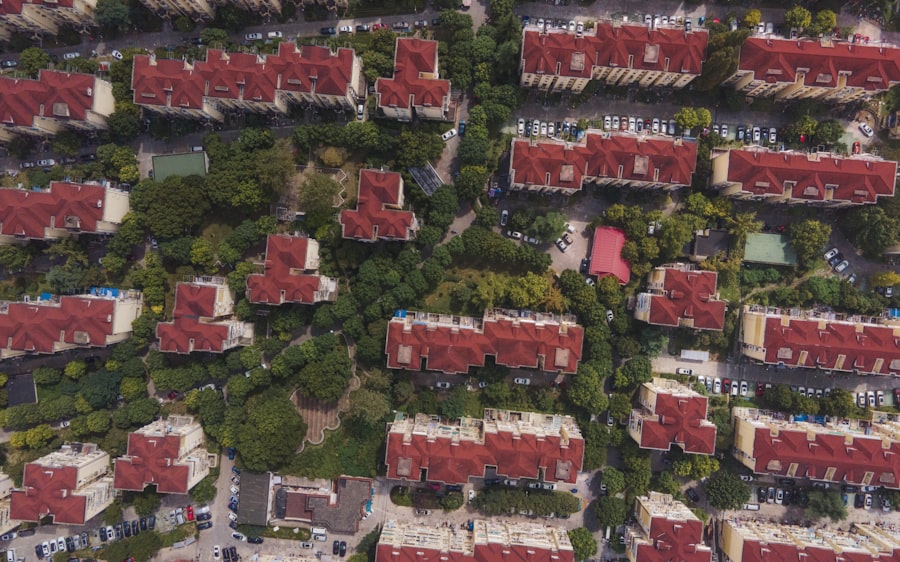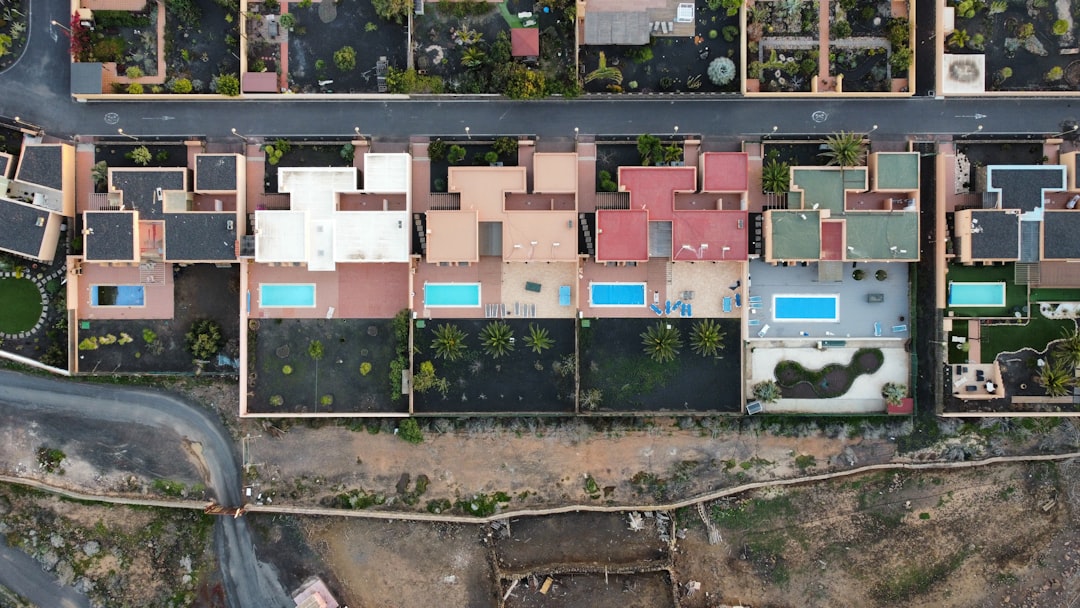Exclusionary zoning refers to land-use regulations that effectively limit certain groups of people from residing in specific areas, often based on socioeconomic status, race, or family composition. These regulations can manifest in various forms, such as minimum lot sizes, restrictions on multi-family housing, and prohibitions against affordable housing developments. By imposing these constraints, municipalities can create environments that favor wealthier residents while simultaneously pushing lower-income families out of desirable neighborhoods.
This practice not only shapes the physical landscape of communities but also influences the social fabric and economic opportunities available to residents. As you delve deeper into the concept of exclusionary zoning, it becomes clear that it is not merely a technical aspect of urban planning but a reflection of broader societal values and priorities. The implications of such zoning practices extend beyond mere housing availability; they touch upon issues of equity, access to resources, and community cohesion.
By understanding exclusionary zoning, you can better appreciate the complexities involved in creating inclusive communities that cater to diverse populations.
Key Takeaways
- Exclusionary zoning refers to the use of zoning laws and regulations to restrict the development of affordable housing in certain areas.
- Historical context shows that exclusionary zoning has been used to perpetuate segregation and inequality in housing.
- Exclusionary zoning has a significant impact on housing affordability, making it difficult for low-income individuals and families to find affordable housing options.
- Exclusionary zoning contributes to segregation and inequality by concentrating poverty in certain areas and limiting access to resources and opportunities.
- Addressing exclusionary zoning requires a comprehensive approach that includes legal and ethical considerations, community engagement, and policy recommendations to promote inclusive zoning practices.
Historical Context of Exclusionary Zoning
To fully grasp the implications of exclusionary zoning today, it is essential to explore its historical roots. The practice gained traction in the early 20th century as cities began to implement zoning laws aimed at controlling land use and managing urban growth. Initially, these regulations were often justified on the grounds of public health and safety, with proponents arguing that separating industrial areas from residential neighborhoods would protect citizens from pollution and hazards.
However, as you examine the evolution of these laws, it becomes evident that they were also used to reinforce social hierarchies and maintain racial segregation. The post-World War II era marked a significant turning point in the history of exclusionary zoning. As returning veterans sought housing, suburban development boomed, leading to the implementation of zoning laws that favored single-family homes and large lots.
These regulations often excluded lower-income families and people of color from accessing these burgeoning suburban areas. The legacy of redlining and discriminatory lending practices further compounded these issues, creating a landscape where access to housing was inextricably linked to race and class. Understanding this historical context allows you to see how exclusionary zoning has shaped contemporary housing challenges.
Impact of Exclusionary Zoning on Housing Affordability

One of the most pressing consequences of exclusionary zoning is its impact on housing affordability. By restricting the types of housing that can be built in certain areas, these regulations contribute to a scarcity of affordable options for low- and moderate-income families. As you consider the dynamics at play, it becomes clear that when municipalities impose minimum lot sizes or prohibit multi-family dwellings, they inadvertently drive up property values and rents in those neighborhoods.
This creates a cycle where only wealthier individuals can afford to live in desirable areas, further exacerbating the housing crisis. Moreover, the lack of affordable housing options forces many families to seek shelter in less desirable neighborhoods, often far from their workplaces and essential services. This not only affects their quality of life but also places additional burdens on transportation systems and local economies.
As you reflect on these realities, it becomes evident that exclusionary zoning is not just a local issue; it has far-reaching implications for regional housing markets and overall economic stability.
Effects of Exclusionary Zoning on Segregation and Inequality
| Metrics | Findings |
|---|---|
| Segregation Index | Exclusionary zoning contributes to higher levels of segregation in residential areas. |
| Income Inequality | Areas with exclusionary zoning tend to have higher income inequality due to limited affordable housing options. |
| Education Disparities | Exclusionary zoning can lead to disparities in access to quality education, as low-income families are often concentrated in certain areas. |
| Health Disparities | Communities with exclusionary zoning may experience health disparities due to limited access to healthcare facilities and resources. |
Exclusionary zoning plays a significant role in perpetuating segregation and inequality within communities. By limiting access to certain neighborhoods based on income or family structure, these regulations create barriers that disproportionately affect marginalized groups. As you analyze the data, you may find that areas with strict zoning laws often correlate with higher levels of racial and economic segregation.
This segregation not only restricts access to quality education and employment opportunities but also reinforces systemic inequalities that have persisted for generations. The consequences of such segregation are profound. When communities are divided along socioeconomic lines, social cohesion diminishes, leading to increased tensions and misunderstandings among different groups.
You might consider how this fragmentation affects community engagement and civic participation, as individuals from segregated neighborhoods may feel disconnected from broader societal issues. Ultimately, exclusionary zoning contributes to a cycle of disadvantage that is difficult to break, making it imperative to address these practices in pursuit of a more equitable society.
Implications of Exclusionary Zoning on Economic Development
The implications of exclusionary zoning extend beyond social equity; they also have significant ramifications for economic development. When certain areas are off-limits to affordable housing or diverse types of development, local economies suffer from a lack of investment and innovation. As you explore this relationship, you may notice that regions with inclusive zoning practices tend to attract a more diverse workforce and foster entrepreneurial growth.
In contrast, exclusionary zoning can stifle economic opportunities by limiting the pool of potential residents who can contribute to local businesses and services. Furthermore, the economic impact of exclusionary zoning is often felt most acutely by small businesses that rely on a diverse customer base. When neighborhoods become homogenous due to restrictive zoning laws, local shops may struggle to survive as they lose potential customers from varied backgrounds.
You might reflect on how inclusive zoning practices can create vibrant communities where businesses thrive due to a rich tapestry of residents who bring different perspectives and needs to the marketplace.
Legal and Ethical Considerations of Exclusionary Zoning

The legal landscape surrounding exclusionary zoning is complex and often contentious. While municipalities have the authority to regulate land use for legitimate purposes such as public health and safety, these regulations can sometimes cross into discriminatory territory. As you navigate this legal framework, it becomes essential to consider how courts have interpreted zoning laws in relation to civil rights protections.
Landmark cases have challenged exclusionary practices, highlighting the need for a balance between local control and equitable access to housing. Ethically, exclusionary zoning raises significant questions about fairness and justice in urban planning.
The ethical considerations surrounding exclusionary zoning compel you to think critically about how communities can create inclusive environments that respect the rights and dignity of all residents. Engaging with these legal and ethical dimensions is crucial for anyone interested in advocating for more equitable housing policies.
Challenges and Criticisms of Exclusionary Zoning
Despite its widespread use, exclusionary zoning faces numerous challenges and criticisms from various stakeholders. Advocates for affordable housing argue that these practices exacerbate existing inequalities and hinder efforts to create inclusive communities. As you consider their perspectives, you may find that many community organizations are actively working to dismantle exclusionary policies through advocacy and grassroots movements.
These efforts highlight the growing recognition that equitable access to housing is a fundamental human right.
When affordable housing options are limited in desirable areas, families are often pushed further away from city centers, leading to longer commutes and greater reliance on automobiles.
This not only contributes to traffic congestion but also has negative implications for air quality and overall sustainability. As you reflect on these criticisms, it becomes clear that addressing exclusionary zoning requires a multifaceted approach that considers both social equity and environmental stewardship.
Alternatives to Exclusionary Zoning
In light of the challenges posed by exclusionary zoning, many cities are exploring alternative approaches to land use regulation that promote inclusivity and affordability. One promising strategy is inclusionary zoning, which requires developers to set aside a portion of new housing units for low- or moderate-income residents. This approach aims to create mixed-income communities where individuals from diverse backgrounds can coexist while benefiting from shared resources and amenities.
Another alternative is form-based codes, which focus on the physical form of buildings rather than their specific uses. By allowing for greater flexibility in design and density, form-based codes can facilitate the development of diverse housing types that cater to various income levels. As you consider these alternatives, it becomes evident that innovative land-use policies can help mitigate the negative effects of exclusionary zoning while fostering vibrant communities.
Community Engagement and Exclusionary Zoning
Community engagement plays a crucial role in addressing exclusionary zoning practices. When residents are actively involved in the decision-making process regarding land use policies, they can advocate for their needs and preferences more effectively. You may find that inclusive planning processes lead to more equitable outcomes by ensuring that diverse voices are heard and considered in shaping local policies.
Moreover, fostering community engagement can help build trust between residents and local government officials. When individuals feel empowered to participate in discussions about zoning regulations, they are more likely to support initiatives aimed at promoting inclusivity and affordability. As you reflect on the importance of community engagement, consider how collaborative approaches can lead to more sustainable solutions that benefit all members of society.
Policy Recommendations for Addressing Exclusionary Zoning
To effectively address the challenges posed by exclusionary zoning, policymakers must adopt comprehensive strategies that prioritize inclusivity and affordability. One key recommendation is to revise existing zoning laws to eliminate overly restrictive regulations that limit housing options for low- and moderate-income families. By promoting flexible zoning practices that allow for diverse housing types, municipalities can create more equitable communities.
Additionally, implementing incentives for developers who include affordable units in their projects can encourage greater investment in inclusive housing solutions. You might also consider advocating for increased funding for affordable housing initiatives at both state and federal levels to ensure that resources are available for those most affected by exclusionary practices. By pursuing these policy recommendations, you can contribute to creating a more just housing landscape.
Moving Forward with Inclusive Zoning Practices
As you reflect on the complexities surrounding exclusionary zoning, it becomes clear that moving forward requires a commitment to inclusive practices that prioritize equity and access for all residents. By understanding the historical context, legal implications, and social consequences of exclusionary zoning, you are better equipped to advocate for change within your community. Embracing alternatives such as inclusionary zoning and fostering community engagement will be essential steps toward dismantling barriers that perpetuate inequality.
Ultimately, creating inclusive communities is not just about addressing housing shortages; it is about fostering environments where individuals from diverse backgrounds can thrive together. As you engage with these issues moving forward, remember that your voice matters in shaping policies that promote fairness and justice in housing access. Together, we can work toward a future where everyone has the opportunity to live in safe, affordable homes within vibrant communities.
Exclusionary zoning refers to land use regulations that effectively limit certain groups of people from living in specific areas, often leading to socioeconomic segregation. A related article that delves deeper into the implications of such zoning practices can be found at
